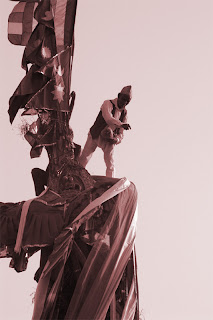Starting from : Kathmandu
Ending at : Pokhara
Grade : Easy
Highest access of the trek : 3200m (Poon hill)
Culture : Gurung, Magar
Mode of trekking tour : Teahouse
Himalayan sights : Dhaulagiri, Fishtail, Annapurna range, Manaslu, Nilgiri etc
Most Attraction of the trek : Close Mountain View, Villages
Ghorapani Pass to Deorali: 1 1/2 & hours; Deorali to Banthanti: 1 hour; Banthanti to Tadapani: 1 hour; Tadapani to Ghandruk: 3 hours. Elevation Gain: 1,780 ft. (543m). Elevation Loss: & 4,240 ft. (1,292m).
It is a long day's walk from Ghorapani to Ghandruk with several steep ascents and descents, but the trail passes through beautiful dense forests unlike any other you will have seen while trekking in this region. There are waterfalls and clear-running streams and, yes, several lodges where you can stay if you want to break up the hike into 2 days. Do not attempt this hike on your own. Always go in a group and stay close together. In the past there have been attacks and robberies along this trail but almost always of lone trekkers.
From Ghorapani Pass, head due east along the top of the ridge, past the school and into the forest. There are many trails heading in this direction, but eventually they all begin climbing up through the forest. In an hour you'll come out on a grassy hilltop at 10,300 feet (3,139m). The view from this point is superb and virtually identical to that from Poon Hill, so if you are planning on heading this way anyway, skip Poon Hill, get an early start, and catch sunrise from here instead. You'll even be able to see the crowds over on Poon Hill.
The trail reenters the forest and climbs a bit more before beginning a descent to several lodges at Deorali (10,100 ft.; 3,078m). Signs at this little clearing in the forest advertise the view from nearby Gurung Hill (yet another hill) as being every bit as good as those from Poon Hill, making this an alternative overnight spot for anyone seeking memorable mountain views. Here at Deorali, you meet a trail from Chitre, a shortcut if you are coming from Tatopani and headed to Ghandruk or the Annapurna Sanctuary. Taking this shortcut eliminates the climb to Ghorapani.
From Deorali, the trail descends steeply to Banthanti (8,720 ft.; 2,658m), a collection of lodges at the base of some limestone cliffs. The setting is enchanting, making this a great spot for lunch. From here, the trail continues descending briefly, then climbs steeply for a while before descending again to 8,250 feet (2,515m). From here it is a steady climb up to Tadapani (8,840 ft.; 2,694m), a collection of lodges that is a popular overnight spot because of its excellent views of Machhapuchhare, Hiunchuli, and Annapurna South. Keep an eye out for langurs around here.
Two trails leave Tadapani. The longer route goes directly to Chomrong by way of Kyumnu for anyone pressed for time and headed to the Annapurna Sanctuary. The other trail makes a long, steady descent to Ghandruk, passing the lodges at Bhaisi Khark in about 45 minutes. After another 1 1/2 & hours, you'll come to a fork in the trail marked by a large sign showing the many lodges in Ghandruk. Take the right fork at this point. From here it is another 30 minutes to Ghandruk (6,750 ft.; 2,057m), which you enter from the upper end of town. If you want to stay in the old part of town, take a left fork steeply downhill when you come to a dense cluster of houses.

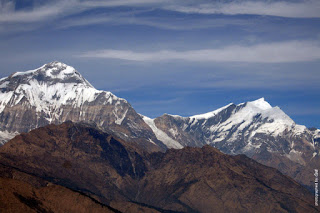

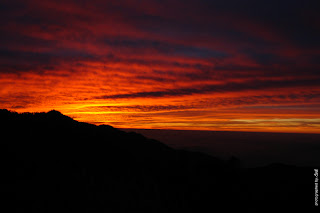
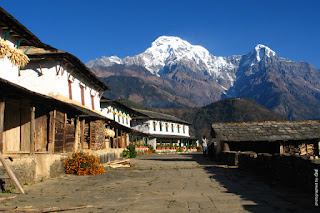
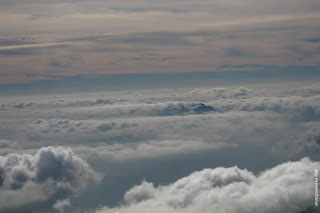
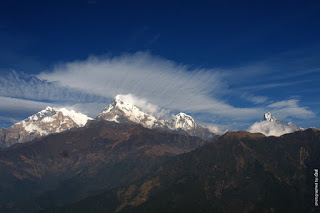



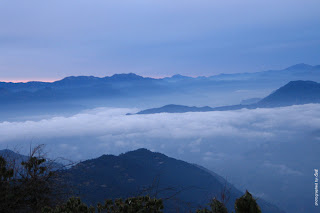

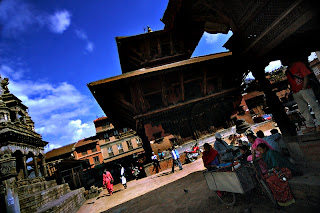
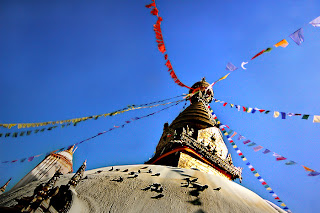
 pilgrimage listed at the World Heritage
pilgrimage listed at the World Heritage